As the weather warms up the UK is often swarmed with reports of biting horseflies. A Museum fly expert explains what is going on.
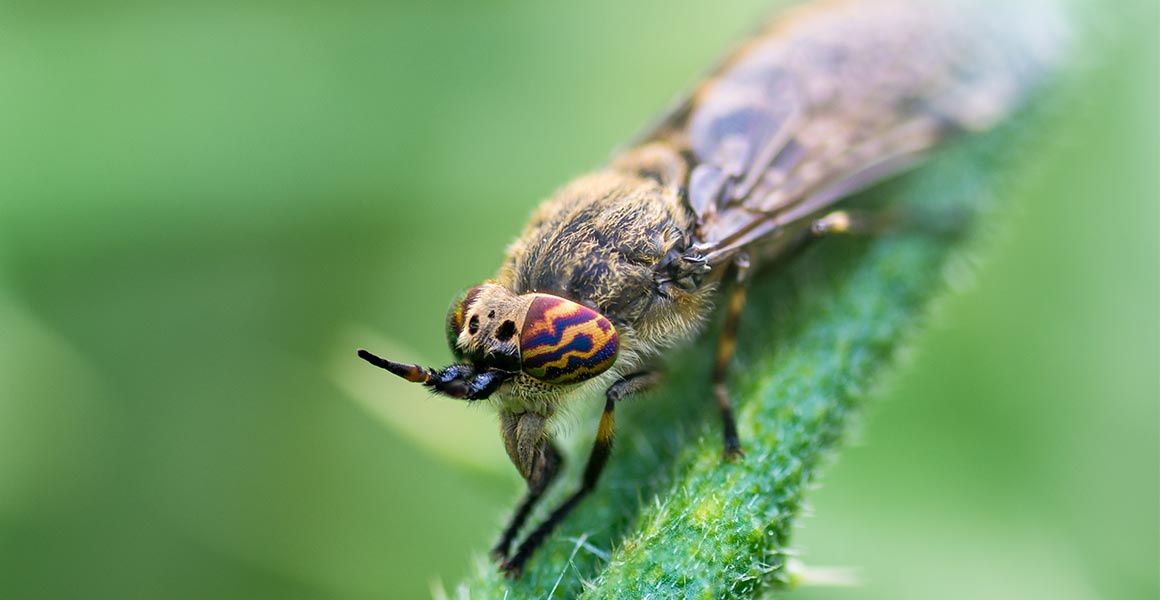
Lots of us suffer from horsefly bites in the UK during the summer ©IanRedding/ShutterStock
Often large, persistent and painful, a bite from a horsefly is an experience unlikely to be forgotten. But why do horseflies seem to appear more in the summer months?
Horseflies tend to be more active during heatwaves. Yet it might not be that there are more horseflies than usual out for blood, but simply that there are more people outside, enjoying the summer.
More people out and about in the warm weather, exposing their skin, will increase the likelihood of people being bitten by the flies (some of which are also called clegs). Coupled with the ubiquity of reports from newspapers to social media, this can make it look like it is a bumper year for the insects.
Why horseflies bite
Not all adult horseflies bite - only the females have mouthparts able to break the skin and feed on blood. This is because only the females need a blood meal.
Dr Daniel Whitmore, Senior Curator of Diptera and Siphonaptera at the Museum, explains, 'They need a high protein input to help develop their eggs after fertilisation.'
The males don't make eggs, so they don't need blood.
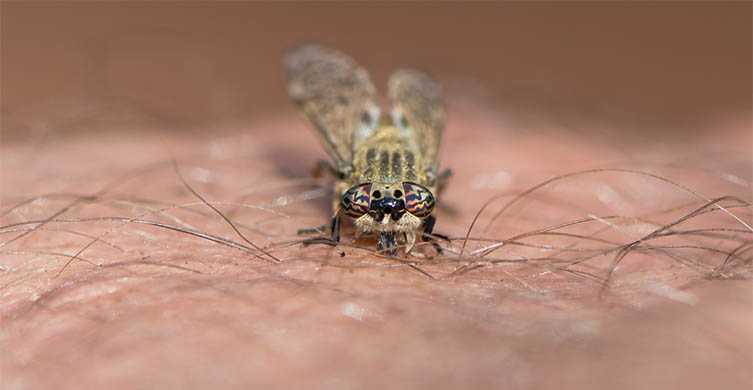
Horsefly saliva prevents the blood from clotting. ©IanRedding/
The way that horseflies feed on blood can seem brutal when compared to the precision of a mosquito. A pair of serrated mandibles saw into the skin, cutting until they break small vessels and the blood begins to flow. An anticoagulant in the fly's saliva then prevents the blood from clotting as the insect sucks up its meal.
While mosquitoes release a mild anaesthetic, horseflies don't - which is one of the reasons their bites are so painful. The fact that they cut into the flesh rather crudely only adds to this pain.
'The horsefly bite is much less sophisticated, likely because usually they have to pierce through much tougher skins than ours when they are feeding on a cow or a horse,' says Daniel. These are horseflies' more usual food source, but they will home in on any large mammal they detect.
Do horsefly bites sting?
In most cases, a bite will result in a raised, red area of skin, which might be painful and sensitive to touch. In extreme cases, bites can cause an allergic reaction that can result in dizziness, swelling and fluid-filled blisters that become infected. If that happens, it is recommended that you seek medical advice.
How to spot and identify a horsefly
The easiest way to spot a horsefly is by looking at its overall size. The insect tends to be large compared to other biting flies, often with colourful and patterned eyes. In males the eyes are so big they touch at the top of the head.
Not all horseflies are dependent on water, but many species lay their eggs on plants growing near ponds, rivers and streams. The larvae of some species are aquatic while others live in damp soil. All feed on other invertebrates until ready to pupate and emerge as adults.
This means you're more likely to come across the larvae around bodies of water, although the adults will disperse. Farms are frequently a hotspot for these flies, as they are attracted by cattle and horses.
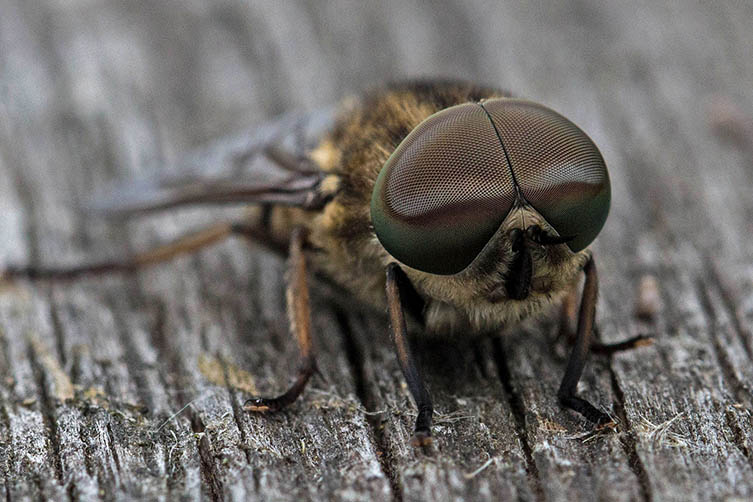
Male horsefly, with eyes touching at the top of its head. ©Mark Robinson/Flickr CC BY-NC 2.0
How to avoid being bitten by a horsefly in the UK
One of the easiest ways to avoid being bitten is to cover up. But according to Daniel, even this might not be 100% effective.
'Horsefly females have such strong, powerful mouthparts that they can sometimes bite you through your clothes,' he says. 'But obviously they are more likely to go for bare skin.' It's probably best to opt for loose-fitting clothing.
There is also evidence that the flies home in on their next victim by sniffing out exhaled carbon dioxide. This means that those doing more strenuous outdoor activities could be at greater risk of being bitten.
Horseflies in the UK
'Obviously, bloodsucking species are annoying,' says Daniel, but he emphasises that they play a vital role in the ecosystem.
In the UK there are just 30 species of horsefly, but globally there are over 4,500 species whirring around every part of the world except the polar regions.
As the female horseflies seek out their next blood meal, the males are searching for something much sweeter. Buzzing from flower to flower, the male flies actually feed on nectar.
In some cases, this makes the flies crucial pollinators, coevolving with the plants on which they feed.
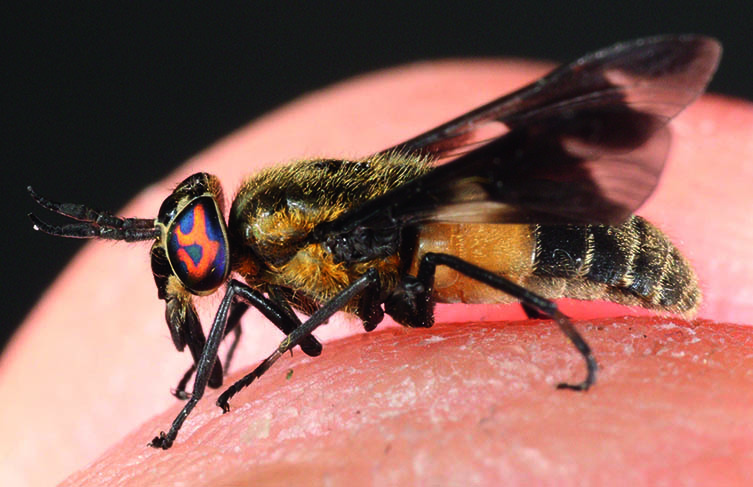
Horseflies can be identified by their eyes. ©Magre Flåten/Wikimedia Commons
'There are some species of horsefly in which both sexes have extremely elongated mouthparts to suck nectar out of long-tubed flowers,' explains Daniel.
So entwined is this relationship that the flies are thought to be involved in driving new species of flowers to evolve, and vice versa.
Along with many other flying insects, horseflies are also a key food source for many other animals higher up the food chain. They help underpin other, more charismatic species such as bats and birds, while the aquatic larvae of the insects feed fish.
So even though horseflies might plague us in the UK during the summer months, they're an important aspect of the much wider ecosystem.
We hope you enjoyed this article…
... or that it helped you learn something new. Now we're wondering if you can help us.
Every year, more people are reading our articles to learn about the challenges facing the natural world. Our future depends on nature, but we are not doing enough to protect our life support system.
British wildlife is under threat. The animals and plants that make our island unique are facing a fight to survive. Hedgehog habitats are disappearing, porpoises are choking on plastic and ancient woodlands are being paved over.
But if we don't look after nature, nature can't look after us. We must act on scientific evidence, we must act together, and we must act now.
Despite the mounting pressures, hope is not lost. Museum scientists are working hard to understand and fight against the threats facing British wildlife.
For many, the Museum is a place that inspires learning, gives purpose and provides hope. People tell us they 'still get shivers walking through the front door', and thank us for inspiring the next generation of scientists.
To reverse the damage we've done and protect the future, we need the knowledge that comes from scientific discovery. Understanding and protecting life on our planet is the greatest scientific challenge of our age. And you can help.
We are a charity and we rely on your support. No matter the size, every gift to the Museum is critical to our 300 scientists' work in understanding and protecting the natural world.
From as little as £2, you can help us to find new ways to protect nature. Thank you.

British wildlife
Find out about the plants and animals that make the UK home.
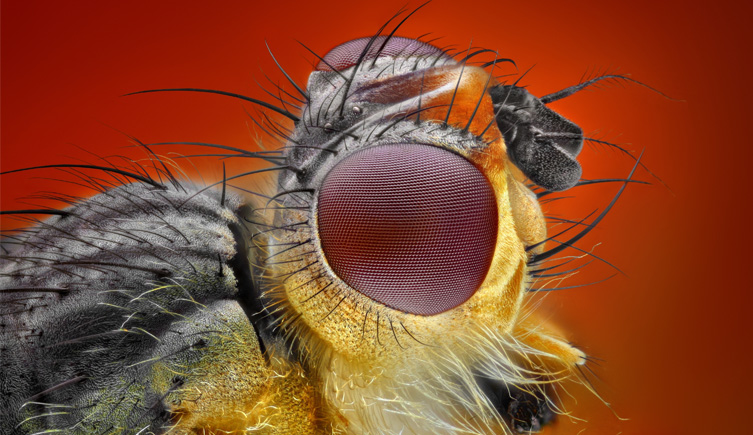
Want to learn more about the world of flies?
Check out our Fascinating Flies course and delve into the amazing details of these remarkable insects.

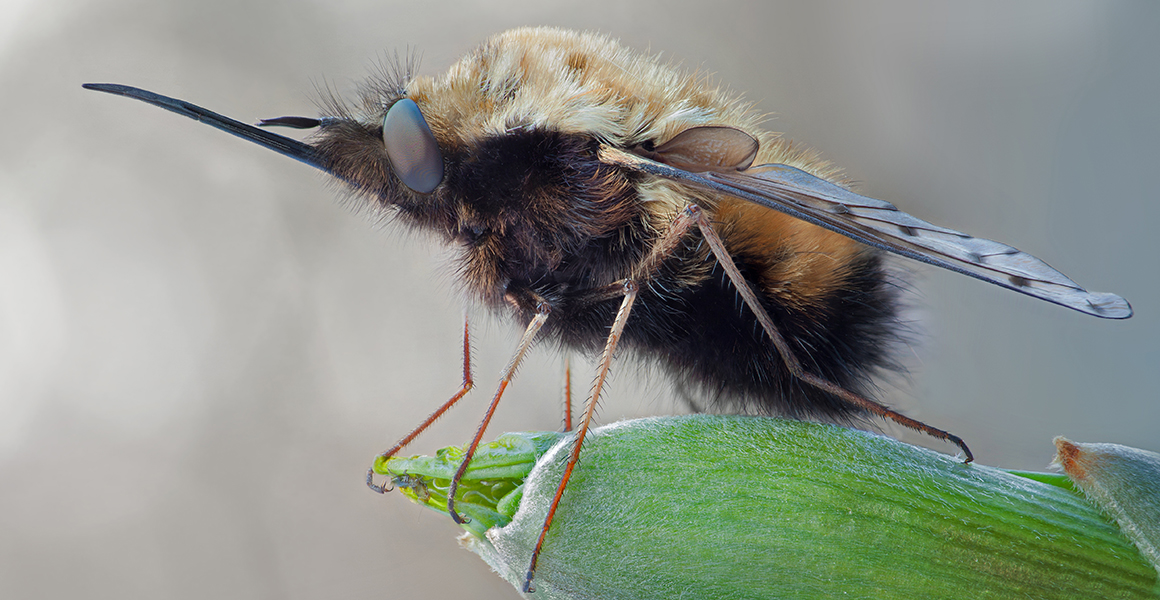
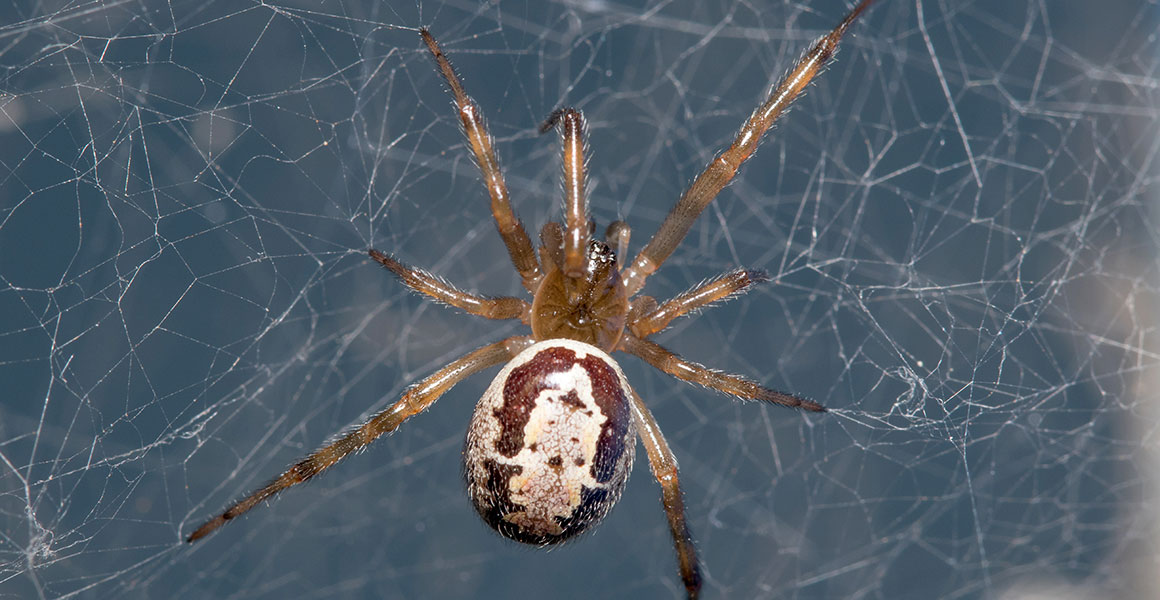

Don't miss a thing
Receive email updates about our news, science, exhibitions, events, products, services and fundraising activities. We may occasionally include third-party content from our corporate partners and other museums. We will not share your personal details with these third parties. You must be over the age of 13. Privacy notice.
Follow us on social media